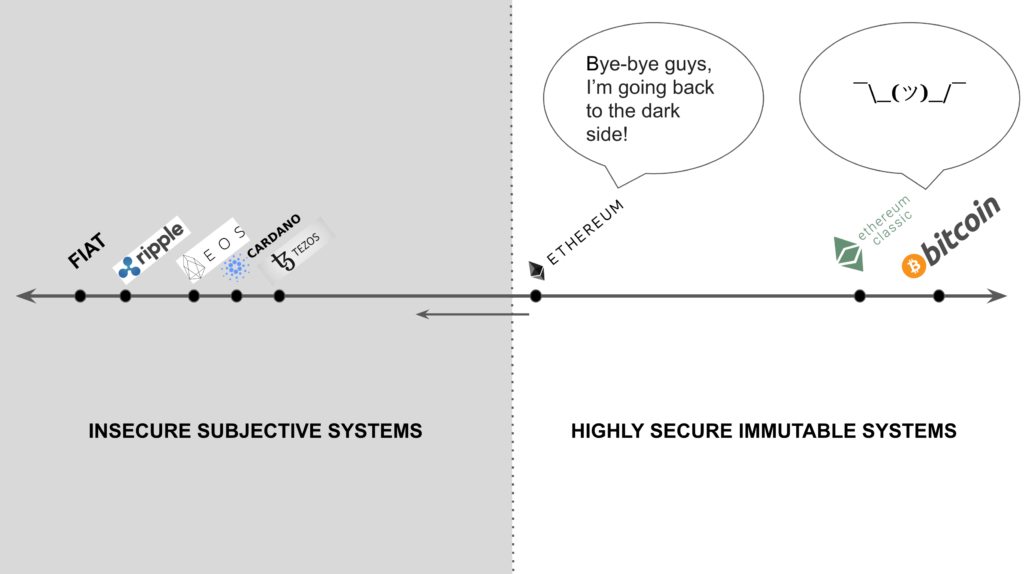You can listen to or watch this article here:
When Ethereum forked away from the Ethereum Classic (ETC) mainnet, on July 20th of 2016, it was because a group of developers, miners, full node operators, investors and other independent ecosystem members made a philosophical statement: Code Is Law.

This meant that the mainnet continued with its immutable money, property, and agreements ledger, and Ethereum turned, from then on, into a subjectively managed network.
The alignment with Bitcoin philosophy is, hence, that ETC is a network that prioritizes the integrity of the blockchain above any other interests.

By “integrity” it is meant the immutability of the state, which contains the ledger with money, property, and agreements.
“Any other interests” means that in Ethereum Classic, as in Bitcoin, the blockchain’s strategy is not adjusted to the developer team’s goals. It’s the other way around, the core developer team’s strategy is adjusted to the blockchain’s goals.
This line of thinking and ethics includes all other network stakeholders such as miners, full node operators, application developers, exchanges, investors, users, and other types of constituents.
The end result of this “hybrid” between Bitcoin philosophy and Ethereum technology is an incredibly powerful, unique, global, cross border, permissionless, Turing complete, proof-of-work, fixed monetary policy, and immutability focused network.
Code Is Law